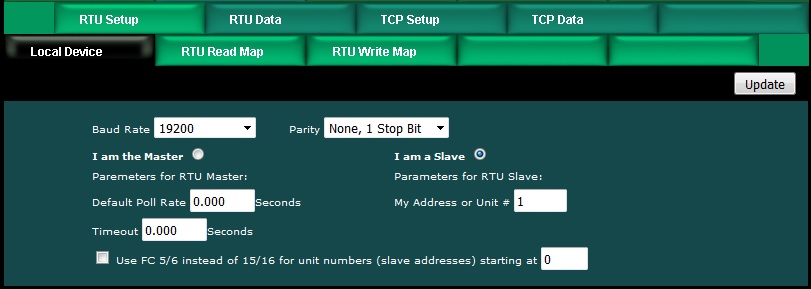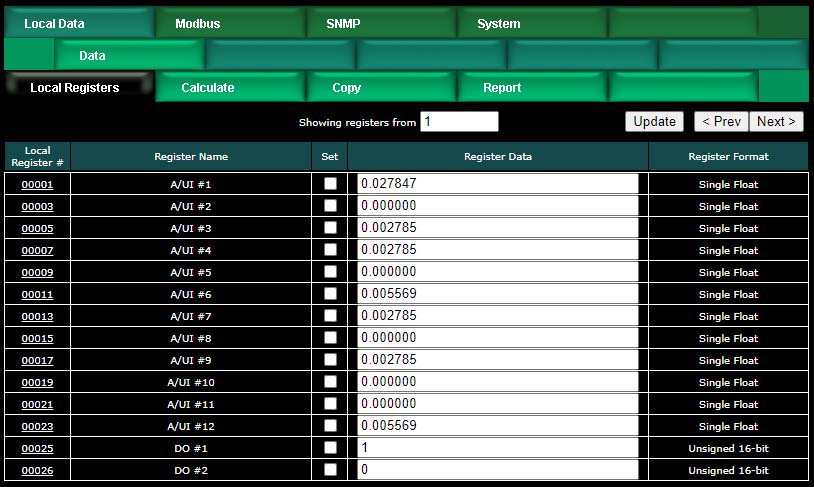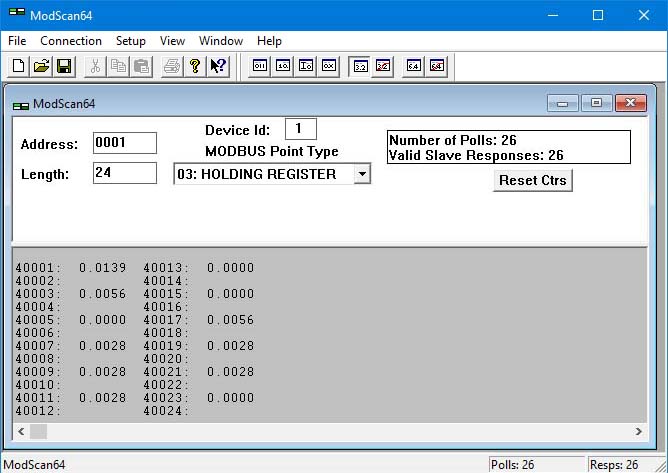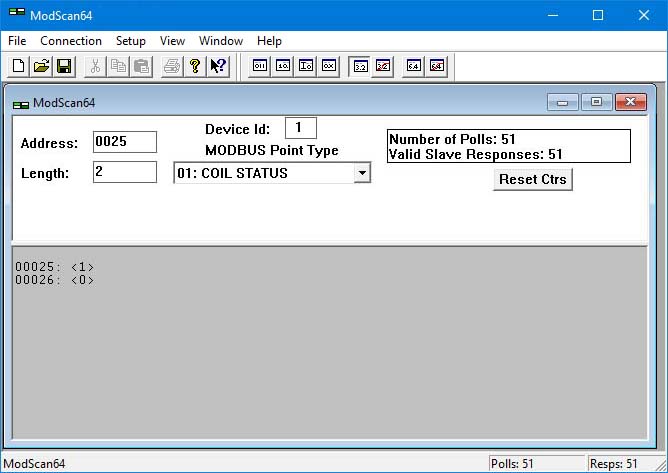
 |
Device configuration for RTU means configuring the serial port. Select the baud rate and parity as applicable. Select "I am a Slave". It is important to provide an address or unit number that is not used by any other slave on the RTU network. The poll rate, timeout, and "Use FC 5/6..." only apply when RTU is master.

The local registers in the ValuPoint will be most often accessed as holding registers, but can also be accessed as input registers (for reading but input registers cannot be written to). If the local register is defined as 16-bit signed or unsigned, then it can also be accessed as a coil or discrete input (for reading). When accessed as a single bit Modbus register, the value read by the Modbus master will be 0, or 1 if the local register contains 1 or any other non-zero value. Of course the remote master can only write 0 or 1 to a coil. Note also that a local register defined as something bigger than 16-bit cannot be accessed as a coil or discrete input.
The register numbers that the remote Modbus RTU master should read or write are simply those shown in the first column on the Local Registers page.

The first 24 registers are defined as floating point register pairs and assigned to the 12 physical input points. Viewing the floating point data using ModScan is illustrated below. The default data format is "Most significant register first" when selecting floating point in ModScan.

The two registers assigned to the relay outputs, registers 25 and 26, may be read and written as coils.

The ValuPoint brand new out of the box will be configured as Modbus RTU slave, 9600 baud, slave address 1. Although no registers other than I/O points are configured, there will be a single holding register accessible for diagnostic purposes, at register number 8801 (or 48801 if using Modicon notation). The content of this register will be firmware revision expressed as a 3-digit number "abbcc" where "a" is the major revision, "bb" is minor revision, and "cc" is build iteration. This should correspond to the firmware revision displayed on the home page (index.html) of the web user interface for the device, which is displayed as "a.bb.c".